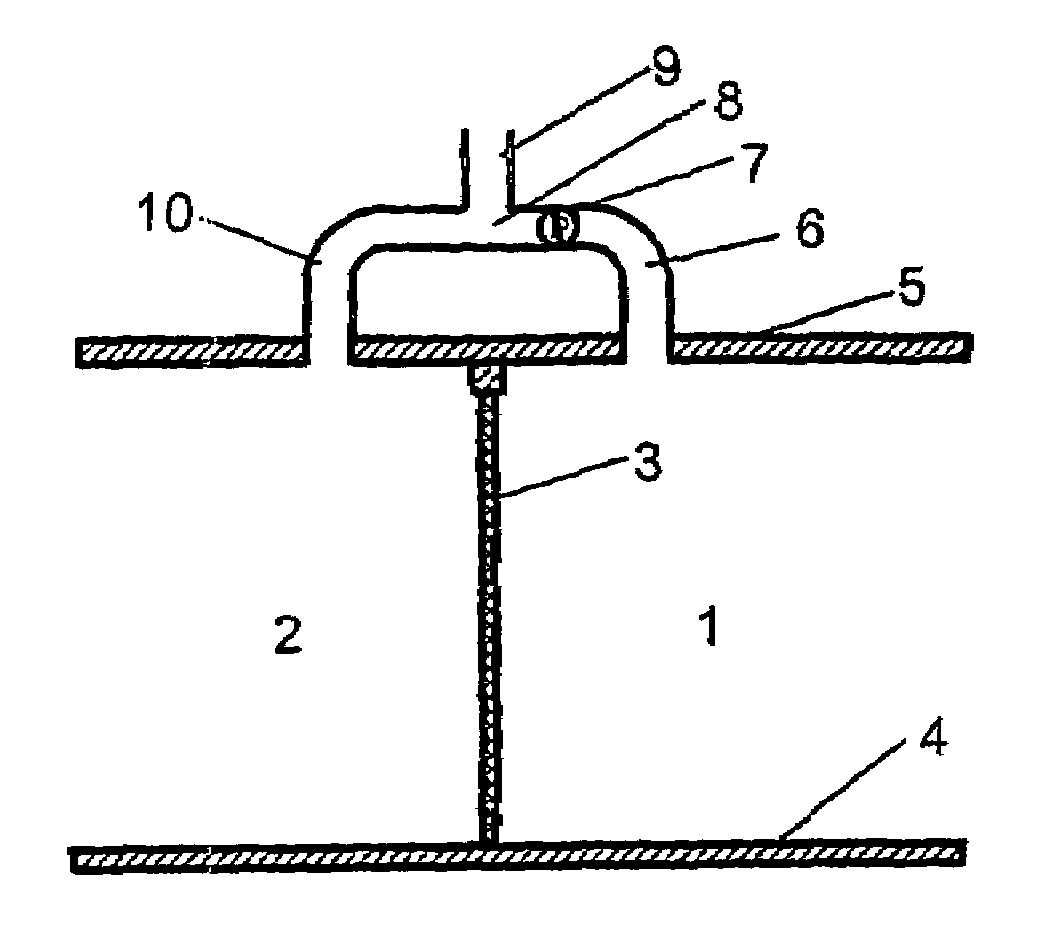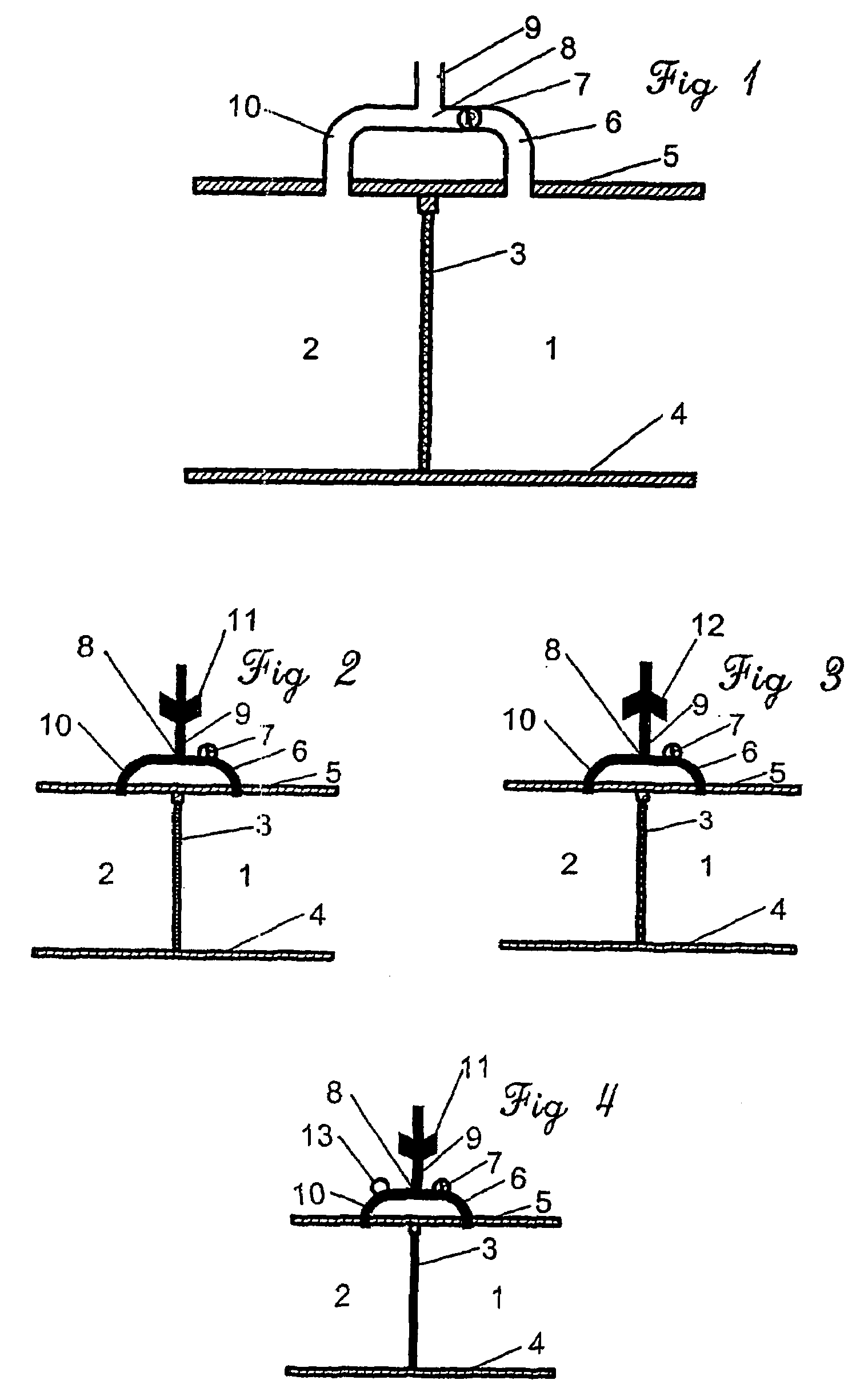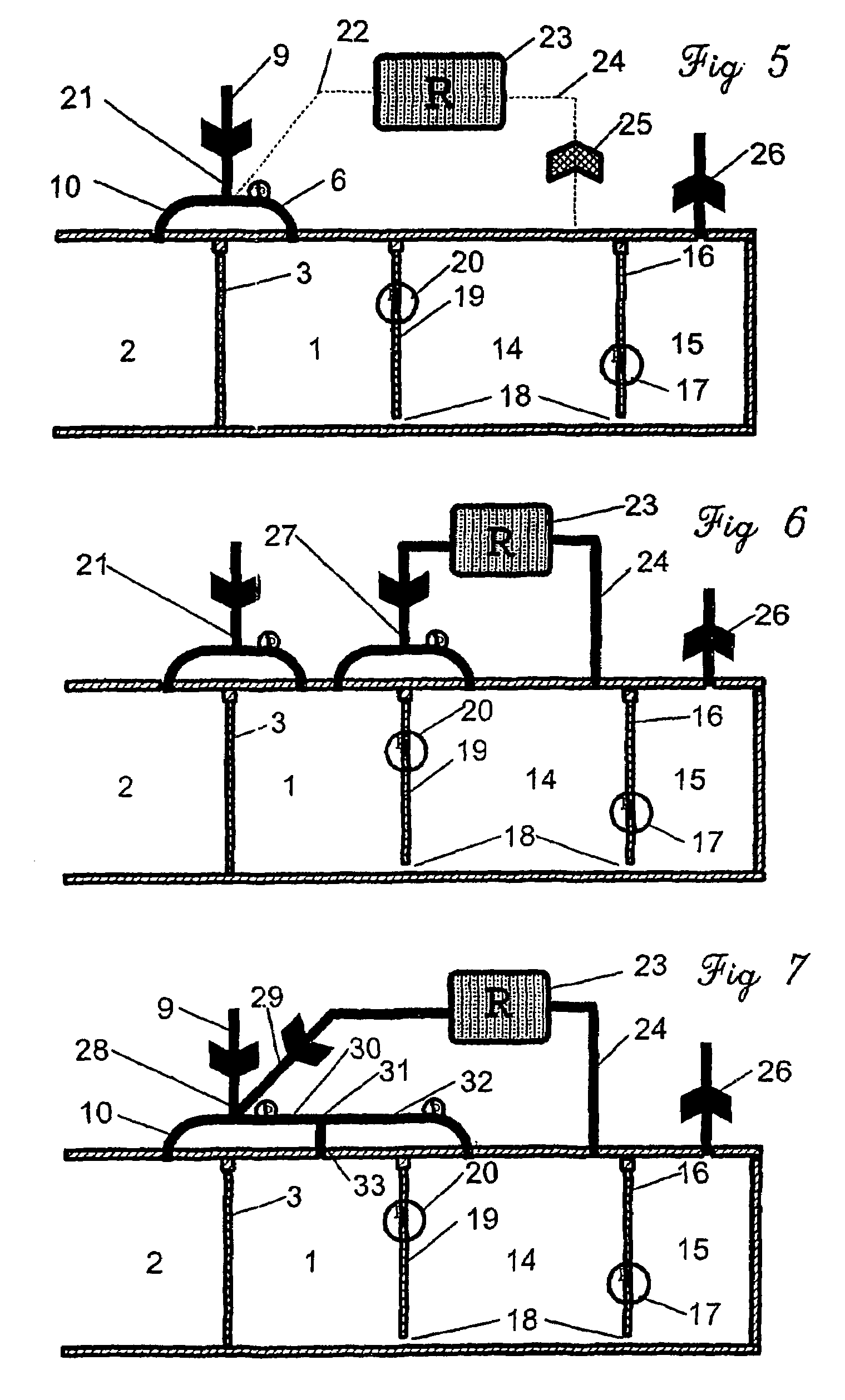Arrangement for controlling airflow for example in clean rooms
a technology for controlling airflow and clean rooms, which is applied in the field of ventilation installation in buildings, can solve the problems of air filtering, reducing air volume, and difficulty in completely sealing rooms, and achieves the effects of avoiding excess pressure, simple and reliable manner, and high security
- Summary
- Abstract
- Description
- Claims
- Application Information
AI Technical Summary
Benefits of technology
Problems solved by technology
Method used
Image
Examples
Embodiment Construction
[0028]Initially, the invention will be discussed in terms of the sketch shown in FIG. 1.
[0029]The centre of the invention is a device or an arrangement with minimum three connected channels / flow paths where air can flow alternative routes depending on local pressure ratio in connected rooms / cells / zones. In at least one airflow route 6 is an arrangement that functions in such a manner that airflow in 6 gives a certain drop in pressure. Such an arrangement will hereafter be known as a resistor element. The resistor element, for example in 6, can be any device giving a difference in pressure by airflow, such as a restriction in area, a frame grate, a filter, a device influenced by flow and / or pressure ratio in or in connection to 6, a device influenced by conditions connected to door(s) between rooms with channels connected to the invention or a combination of two or more of said possibilities or equivalent. The design or dimension of the airflow route may also constitute or be include...
PUM
 Login to View More
Login to View More Abstract
Description
Claims
Application Information
 Login to View More
Login to View More - R&D
- Intellectual Property
- Life Sciences
- Materials
- Tech Scout
- Unparalleled Data Quality
- Higher Quality Content
- 60% Fewer Hallucinations
Browse by: Latest US Patents, China's latest patents, Technical Efficacy Thesaurus, Application Domain, Technology Topic, Popular Technical Reports.
© 2025 PatSnap. All rights reserved.Legal|Privacy policy|Modern Slavery Act Transparency Statement|Sitemap|About US| Contact US: help@patsnap.com



